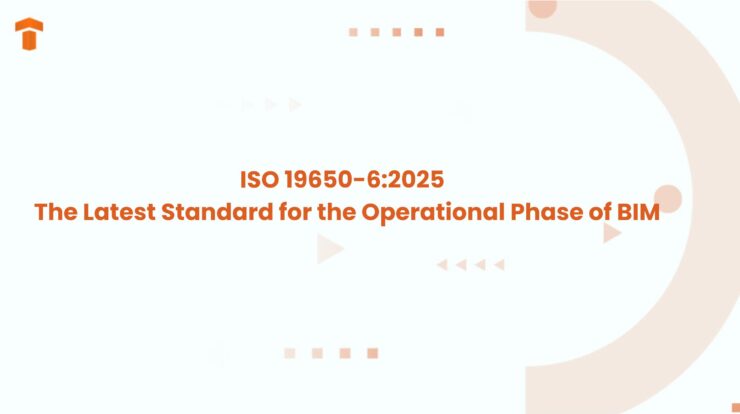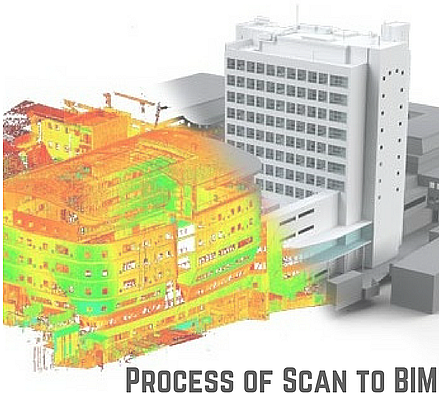
The introduction of Building Information Modeling (BIM) has transformed the way projects are designed, managed, and built in the realm of construction. This revolutionary technology has allowed the AEC professionals to shift focus to the operational phase, hence effective management of information in a built asset’s lifecycle is vital.
ISO 19650-6:2025 is part of the globally recognized ISO 19650 series. It offers a structured framework for managing information in the operational stages of civil engineering works. This standard paves the way for effective data management and use in post-construction to boost operational performance, improve the sustainability of built assets, and lower costs. This write-up aims to delve into the meaning, scope, benefits, and implementation of this standard.
What is ISO 19650-6:2025?
It belongs to the broader ISO 19650 family, which leverages BIM to manage data during the lifecycle of a built asset. Specifically, ISO 19650-6:2025 aids in using BIM in the operational stage of a structure. This period is referred to as the operational phase, such as an asset like a building, a bridge, or a road is ready to use after construction.
AEC professionals utilize this standard to manage data generated during the operational stage according to specific guidelines. This process entails asset management, repair, and maintenance using a large amount of data. In a nutshell, this standard provides accurate information to owners, facility managers, and operators to promote operational efficiency and an asset’s performance.
Significance of ISO 19650-6:2025
Maintenance, repairs, operational management, and upgrades are paramount to ensuring a building’s safety and proper function. Effective management at this stage can boost a structure’s performance, life, and cost savings. However, managing a substantial amount of data can be challenging.
The latest update of ISO 19650 offers a clear framework for managing, sharing, and using information in this period. The importance of this standard is explained below.
Lower Operational Cost
Since operators can effectively manage the data, they can streamline the maintenance process, optimize energy usage, lessen the risk of costly replacements or repairs, and reduce waste. Their informed decisions made using accurate and updated information make it possible.
Enhance Asset Performance
Reliable and well-managed information aids in improved decision-making for the operators. This way, they can monitor energy consumption, predict maintenance requirements, and enhance the overall performance of an asset.
Ensure Compliance and Safety
Different places have their own regulatory standards, and adhering to them is necessary to ensure the well-being and safety of the occupants. Operators can harness complete information management practices to ensure compliance with legal requirements and ensure the assets function according to the laws.
Increase Sustainability
This part of ISO 19650 supports sustainability goals by using resources and data. Implementing this standard allows for efficiency in building asset operations. It leads to lower energy use, reduces waste, and supports longer asset lifecycles.
Scope of ISO 19650-6:2025
Let’s learn about the scope of this updated standard here:
Information Requirements
In this standard, various types of data required in the operational phase of the asset are defined. This information includes maintenance schedules, health and safety documentation, operational manuals, asset performance, and more. Professionals find it easy to collect, and store, and is available for use in the operational life of an asset.
Handover of Data
ISO 19650-6:2025 plays a significant role in ensuring a smooth handover of relevant information from the construction to the operational stage. This method helps to identify accurate data, such as maintenance information, as-built models, and warranties. Later, they can be transferred to the individuals responsible for managing the asset’s operations.
Data Security and Governance
In this process, operators understand the importance of governing information and securing it. Data protection, integrity and accuracy of information, and access rights management are part of this procedure, leading to higher protection of sensitive data.
Continuous Learning and Collaboration
This part of ISO 19650 promotes collaboration among the stakeholders involved in the operational phase. Their collaborative work helps them in optimizing asset performance together. Moreover, it propels the stakeholders to improve continuously by learning from past practices and regularly updated information.
Implementation of ISO 19650-6:2025
Implementing this process requires meticulous planning and execution. Consider the below-mentioned points while adopting it.
Make Strategies for Information Management
Operators and asset owners must set clear plans about information management that align well with the guidelines mentioned in the latest version of ISO 19650. They should outline the required information and the way to manage and share it with the stakeholders.
Use BIM Tools and Technologies
Implementing BIM tools and technologies that facilitate information management in the operational phase is essential to maximize the benefits of this standard. Stakeholders can choose tools that promote data integration, real-time data monitoring, and collaboration.
Set Clear Roles and Responsibilities
It is key to establish clear responsibilities and roles for data management in the operational stage. This streamlines all the processes like asset performance data management, data security, and conducting regular maintenance.
Train the Staff
All the stakeholders must have a clear understanding of how this version of ISO 19650 works. Provide sufficient training to the staff, stakeholders, and contractors on this innovative process and increase effectiveness in information management.
Regular Monitoring and Evaluation
Establishing regular observation and evaluation of the procedures paves the way for them to work effectively. It will contribute to recognizing the areas for improvement and ensure that the information management planning aligns with the requirements of the asset.
Conclusion
Implementing ISO 19650-6:2025 plays a critical role in the information management of a structure’s operational phase. The gradual inclusion of BIM technology in the construction sector has increased the importance of data management throughout an asset’s lifecycle. This practice can assist in lowering operational costs, promote the sustainability of their built assets, and enhance asset performance.
Hence, investing in this process in terms of time and resources can benefit long-term operations, asset lifespan, and cost savings. It can facilitate the companies involved in the management of built assets.
FAQs
Q1. What is the purpose of ISO 19650?
Ans: It is an international standard for data management during the lifecycle of a building or infrastructure using BIM.
Q2. What are the benefits of ISO 19650 certification?
Ans: Here are the advantages of this type of certificate: Improved collaboration and communication, reduced errors, higher efficiency, data integrity and security, and streamlined project management.
Q3. How do I get ISO 19650 certified?
Ans: A construction firm must adhere to BIM processes and information management systems. It has to document the procedures, contact a certification body for an audit, and address the non-conformities. The certification body provides a certification once the compliance is successful.



